Janthina janthina is one of my favorite shells and, to my great delight, not only did I receive an actual Janthina shell from my friend and teacher Michelle Hanson, but other representations of the Janthina keep finding their way to me. This, combined with the natural attraction I have always felt to the shell and how much I relate to various aspects of it, reinforces it as at least one past & current (and perhaps mainly transitionally) personal shell partner for me.
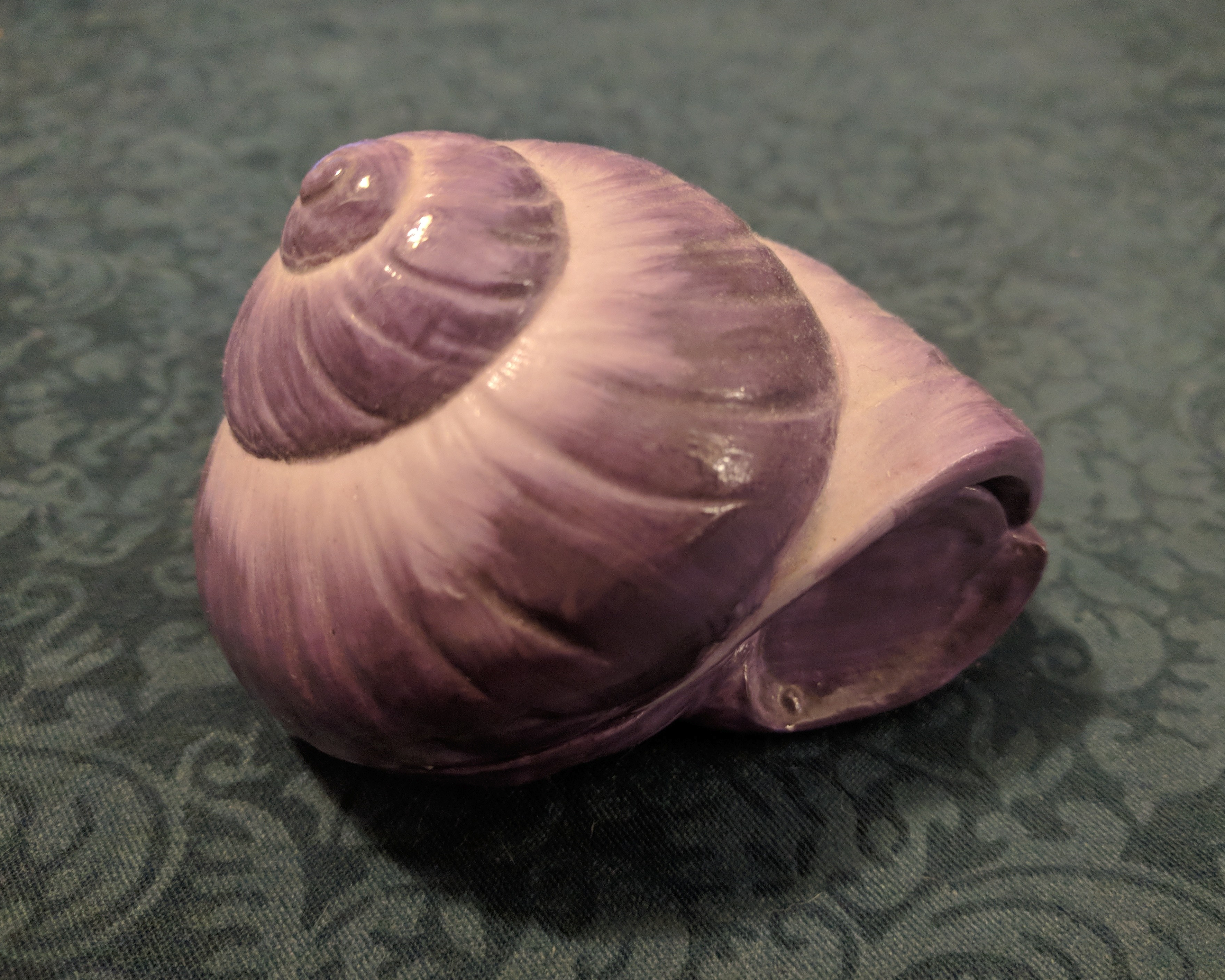
A few years before I started studying the Ocean Oracle and received the actual shell, I inherited from my grandmother a lovely little porcelain trinket box in the shape of a Janthina. At the time I just thought it was a purple seashell but was so happy to later discover exactly what shell it represented.
My life has been filled with painful personal challenges for several months now, and it has been nigh impossible for me to apply myself to almost any spiritual or creative endeavors. Indeed, any endeavor more complicated than getting out of bed and through the day has been a battle. Especially throughout these struggles and changes, the meanings and messages of Janthina have been all the more profound and have revealed themselves to be somewhat more varied and intricate than I thought, at least in ways and for me personally, which I can’t emphasize enough.
In Michelle’s guidebook Ocean Oracle: What Seashells Reveal About Our True Nature, the meaning attributed to the Janthina is as follows…
“Living in a fantasy world, clinging to the clouds with no desire to be shown anything different; a state of denial.”
She continues with a more detailed explanation…
“Although it is unable to swim, the Janthina lives on the surface of the ocean far from shore. It accomplishes this by attaching itself to a homemade raft of mucus-cemented air bubbles. Its survival depends on clinging to these air bubbles, which is equivalent to the desire to live in fantasy, for if it becomes dislodged from the raft it will drown. In addition, the animal is blind, indicating a preference to not see the reality”.
Janthina is indeed very unique among mollusks in the way that it lives in the ocean. Frankly, I found it to be of a more admirable, daring nature than one of just denial and being willfully blind to reality. But this isn’t entirely what Michelle Hanson means to imply, as the meaning of the shells can be complicated and their ultimate interpretation depends strongly on the reaction or attraction of the one choosing the shell in a reading.
I take that to be perhaps the more “negative” or shadowy side of its meanings, rather like a reversed Tarot card or upside-down rune, but again this “negative or positive” interpretation or influence is more determined by whether someone likes the shell or not.
Researching the mollusk and how it grows and lives left me in awe of its very magical ways, and inspired this little poem, which I would like to confess I actually still took some artistic license with and in no way meant to change or disparage its meaning within the Ocean Oracle…
Fair little Janthina,
lilac fairy of the sea –
you are no clinging coward
lost in vain fantasy.
You are a treasure rare and brave
for your raft is your life,
or the depths are your grave
The very depth you gaze upon
from your lofty sea-ceiling,
where you see all that I’m feeling,
little empath floating In-Between.
You need not eyes to see
For still you feel and dare
and feast on most dangerous fare!
Your glistening, highest abode
is shared by none other pelagic
And though so delicate and small
You are filled with transformative magic!
Life is so precarious and unpredictable and I feel that, to some extent, we are all barely holding on to whatever we create to keep ourselves afloat. We sometimes have to be very resourceful and creative and I feel that this can be beautifully reflected in the Janthina.
Of course, sometimes we create or think we have created something that may end up not being what we believed, or that we shouldn’t hold on to anymore, as I personally learned in my life recently. It can be bad enough that perhaps we are or can come across as something of a “clinging coward lost in a vain fantasy”.
But Janthina can also further teach us to adapt and to make the best of what we have, especially when it is not what we planned, wanted or is uncomfortable.
Here are some helpful associations and correspondences that presented themselves to me as I studied and meditated upon all aspects of the Janthina shell and the miraculous mollusk that creates it. I admit I may have, in my enthusiasm, dug for a few a little more than they may have presented themselves! But not much.

To elaborate on all these, let us begin with gender, which I have assigned as feminine. This is due not only to its small, delicate nature and coloring and how passively it lives (apart from its predation!), but almost entirely to the fact that all Janthinas are born as males and turn into females as they grow.
While this is not the only mollusk to have unique sexual features, including undergoing sex change in its life, I still find at least some of the following to be relevant and helpful. But I also want to clarify that there are other shells that may still, while having some of this in common with Janthina, illustrate these points and energies better and more directly.
It is also because of this feature that I find it can assist men with developing and honoring their feminine side. Also those, male or female (but men in particular), who discover they are not heterosexual can benefit from Janthina’s peaceful, accepting energy, I believe.
Additionally, it can be beneficial for healing (or can represent the need to heal) sexual abuse as there is no direct contact between males and females when it comes to reproducing, and males do not even possess a penis.
Obviously the first element I would associate with any seashell is water. However, some have certain characteristics which may align it with other elements. In the case of Janthina, I associate the secondary element of air, as it resides permanently between Air and Water, a powerful “in-between” place. It can therefore represent balance between logic and emotion, which are represented by Air and Water, respectively.
This helps us see different ways to interpret its attachment to its raft, and when we use that as a metaphor for our own lives and habits, we can ask ourselves many revealing questions. Are we balanced between logic and emotion, staying afloat? Or are we losing our grip and sinking, being controlled by emotion alone?
What is it that keeps you afloat in this world, and how do you view it? Is it something you could let go of if you had to, allowing you to move on in a healthy way? Or is it something that you have made so weighty and important that you feel like you would die if you lost it?
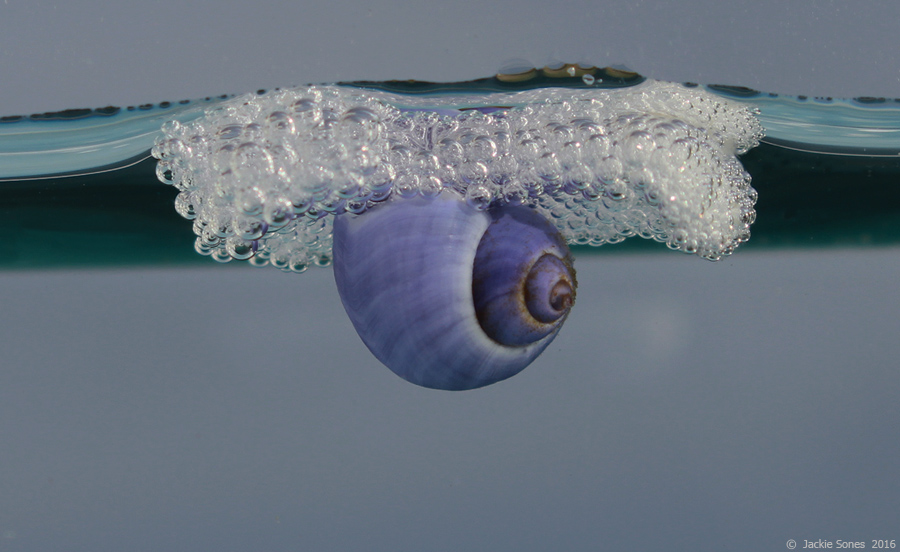
I find Janthina to be most closely related to and representative of the astrological sign of Pisces, being not only watery, but a color associated with both Pisces and its planetary rulers of Jupiter and Neptune (as well as with other correspondences). Hence, I also consider the shell’s “planetary rulers” to be not only Neptune but the Moon.
Pisces is also the sign that is most likely to become severely emotionally crippled and afflicted if out of balance or bereft of nurturing. The Moon, apart from its marine associations, also has much to do with illusion, a shadow side of the shell’s meanings.
Janthina carries energies that are appropriate to the Third Eye chakra, which has to do with spiritual Sight, intuition and higher spiritual understanding. I also relate it to the Crown chakra, the highest, as it too dwells high on top of the sea.
Its color, again, is related to both of these chakras, as its hue can vary from pale violet to indigo.
The fact that Janthina is eyeless further attests to its associations with intuition, in my mind. I was reminded of the advice of Obi-Wan Kenobi to young Luke as he began his Jedi training…
“Your eyes can deceive you, don’t trust them!”
Janthina seems to do just fine without eyes! Being small, fragile, unable to swim and blind does not stop it from feeding on dangerous velellas and Portuguese Man-O’-War jellyfish! (velellas are technically hydrozoans, Portuguese Man-O’-War is technically a siphonophore, closely related to jellyfish)
I personally am not sure that a natural lack of physical eyes is necessarily a fair metaphor for a conscious choice that would be a “preference to not see the reality”, but it can remind us that it is all the more important to use our intuition and be honest with ourselves about what we are perceiving and clinging to. As long as you sense the truth and reality one way or another!
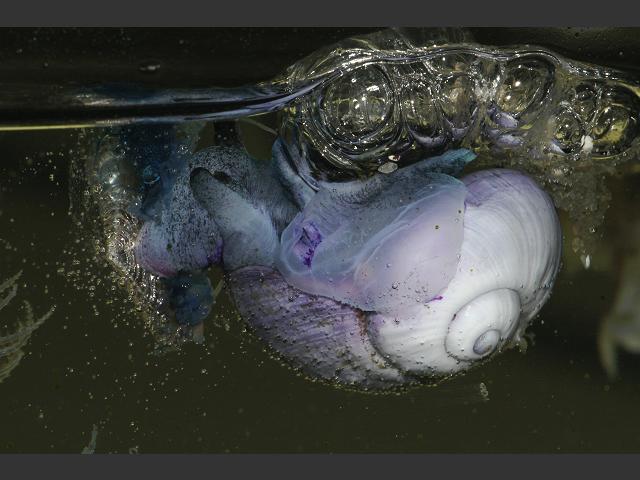
Seashells and crystals have wonderful similarities and make great partners in healing, meditation, ritual work, etc. No prizes for guessing my reasons for partnering Janthina with amethyst! Not only for the obvious color similarities, but the energies and uses attached to amethyst (dream work, meditation, intuition, mysticism, high vibrations) make these a perfect pair.
Remember, many energies and uses attributed to natural substances often begin with their very deliberate color. It is not a purely coincidental visual aesthetic, and this is the case with many of my Janthina correspondences.
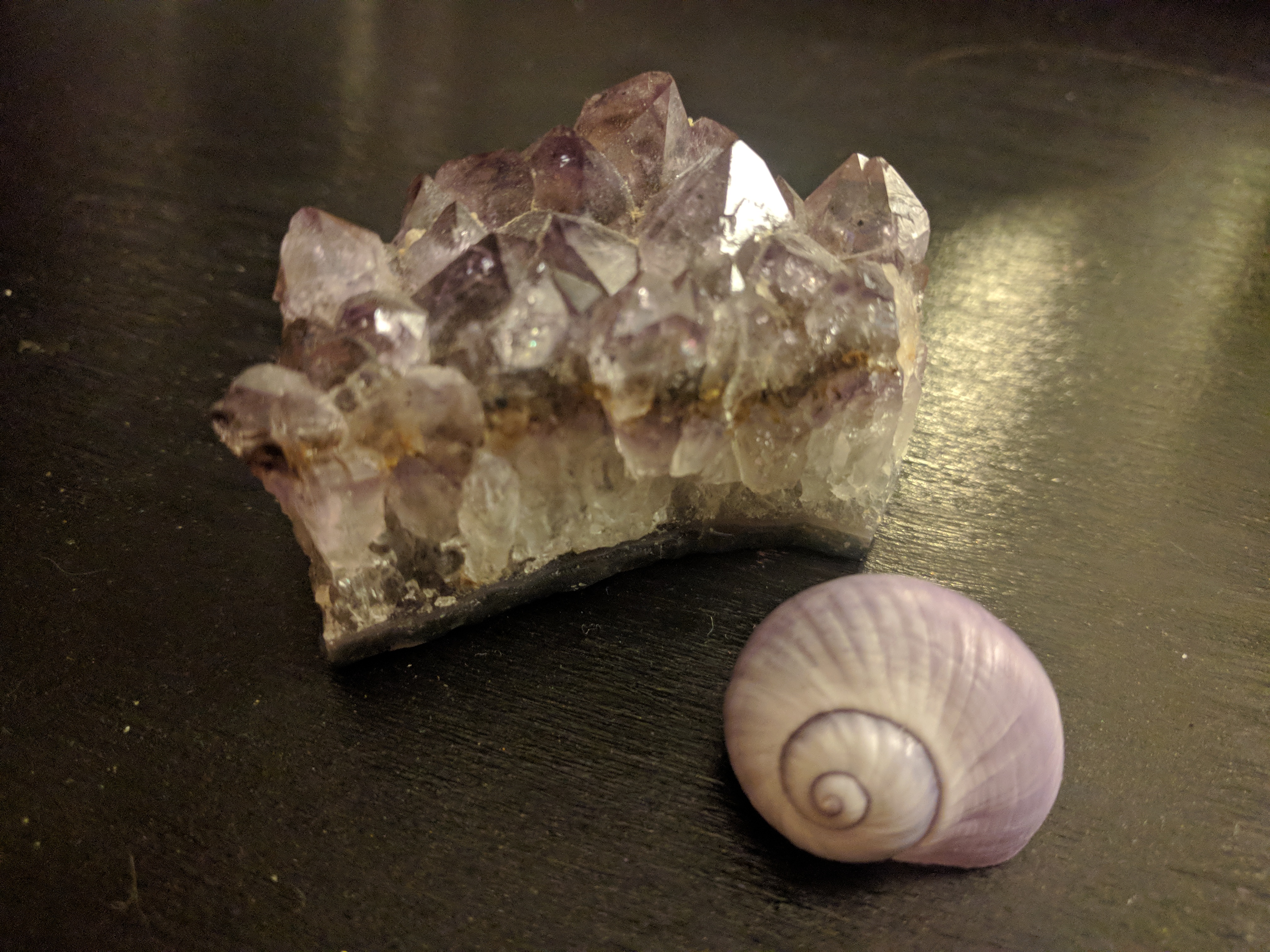
There is a good handful of Tarot cards in which I can see the energy, messages and variations there of of the Janthina, the main three being the Hanged Man, the Queen of Cups, and the Seven of Cups.
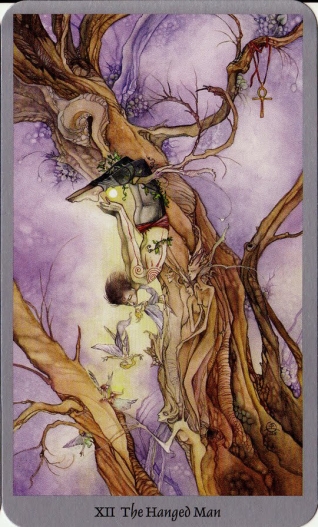
The Hanged Man is suspended in a rather precarious but enlightening position, much like Janthina is. Again, the fact that the Janthina has no eyes means that it must rely on other ways of perceiving, just as the Hanged Man teaches us is sometimes necessary, and that a simple shift in perspective can make all the difference.
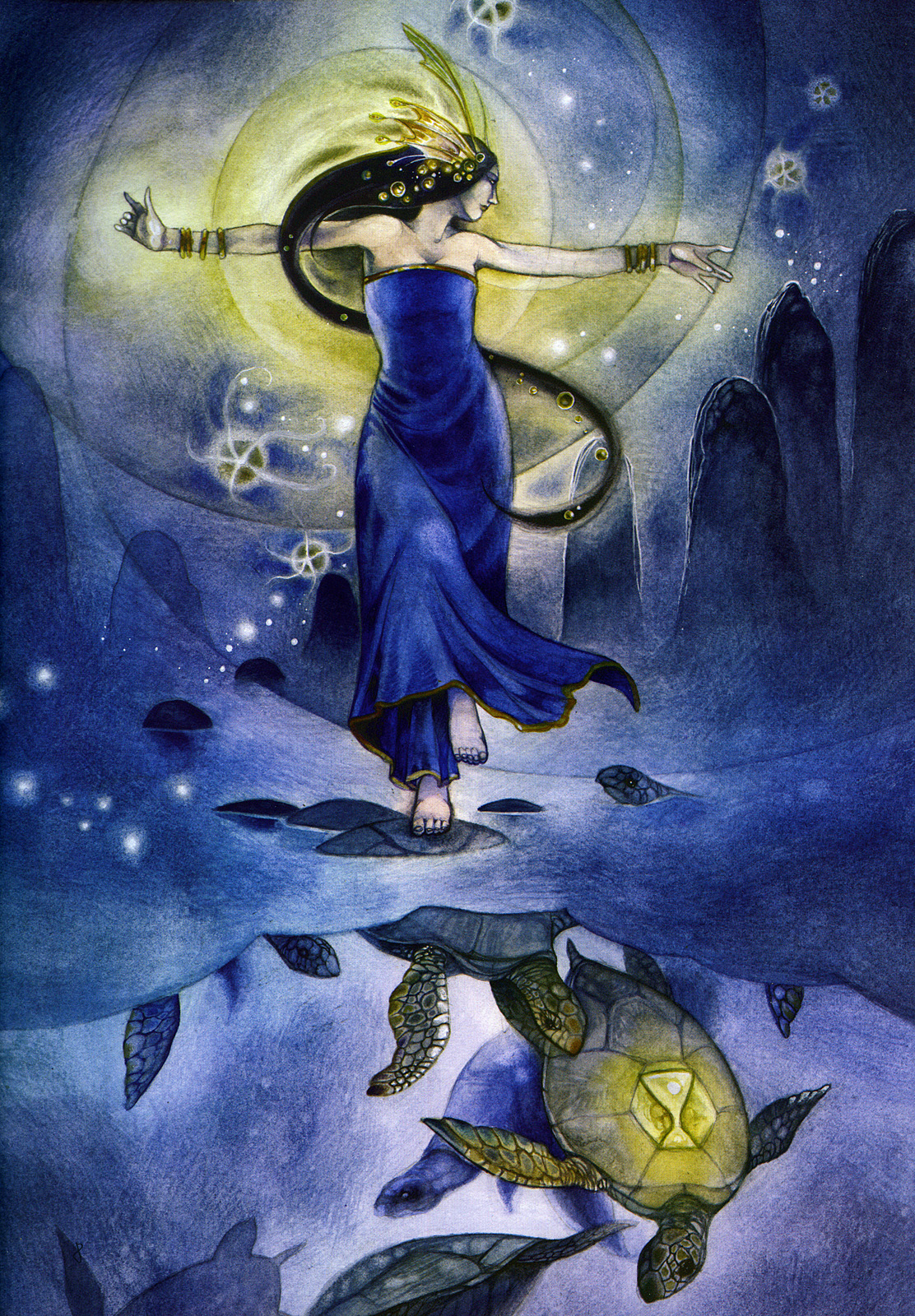
The feminine Queen of Cups also dances most gracefully and fearlessly upon the surface of the waters she knows so well. She has mastered her emotions and the realm of intuition and is the Lady of the first and most magical element.
As you can see, Stephanie Law’s representation of the Queen of Cups and the Seven of Cups in her Shadowscapes Tarot are especially appropriate for the correspondence of this shell.
The Seven of Cups is probably the most fitting card for the Janthina, as it reflects the duality of her fragile and somewhat illusory nature.
Many consider the Seven of Cups to automatically represent illusions and getting lost in fantasy but, somewhat like Janthina, it is more complex than that.
The reversed Seven of Cups can certainly indicate temptations, indulgence, being blinded by fantasies and futile pie in the sky, or poorly guided choices, i.e. an excess or sort of perverse or twisted version of its potential energy.
However, upright, it represents imagination, possibilities, choices and visions. Seven is the number of understanding, magical forces, esoteric knowledge, imagination and mystery – all relevant key-words for the Janthina, again at least in accordance with my personal experience of additional energies of the shell.
Though all those aspects and energies can indeed have a lot to do with the Ocean Oracle’s meaning of Janthina, and are powerful tools that can help one understand and see clearly and wisely choose what to build a life on and hold on to.
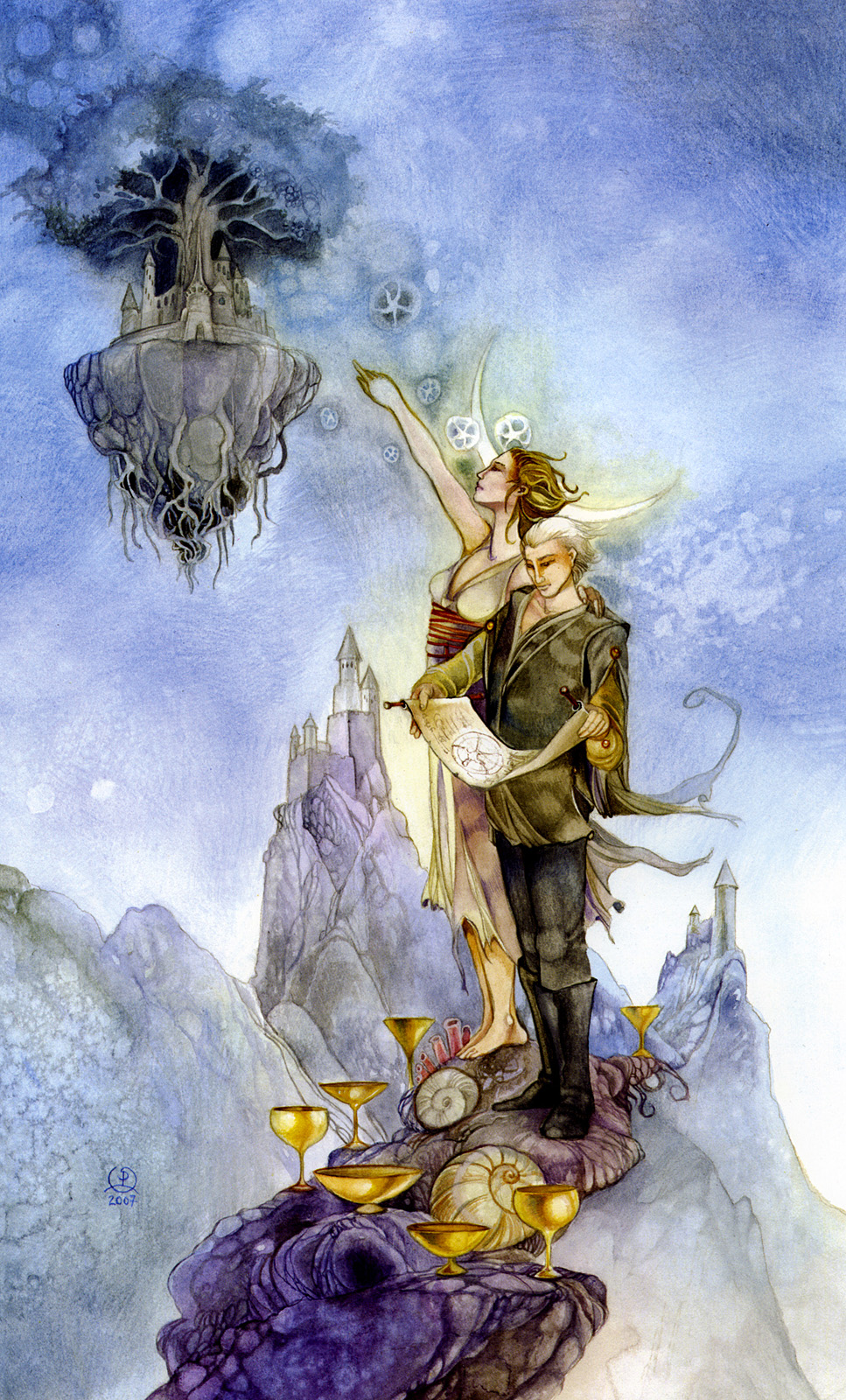
Just as seashells can and do have helpful crystal partners, they also share similarities with herbs and flowers. All the magical tools & treasures of nature have various correspondences, connections and allies!
I relate Janthina to lavender, violets and periwinkle. Again, color and its natural attributions and energies play a part in my perhaps obvious and predictable choices.

The beautiful, floral lavender has long been associated with calming, healing energies and high vibrations. Janthina, as we have seen, also has very peaceful energy and a naturally high vibration which is reflected in its mystical color and the literal height at which in lives. Lavender is also associated with the Air element.
Violets, apart from being violet, also have watery associations in Greek legend to link them to Janthina. The playwright Aristophanes referred to Athens as the “Violet-Crowned City,” because the name of Ion, the legendary founder of Athens who was crowned there, is identical to “ion,” the Greek word for violet. According to legend, Ion was leading his people to Attica and was welcomed by water nymphs, who gave him violets as signs of their good wishes.
The periwinkle flower I associate with Janthina because of its color, its five, slightly spiraling petals that echo the shell’s spiral and give it a magical, pentacle-like appearance, and the fact that its Latin name, vinca, derives from vincire, meaning “to bind”, or “fetter”, and the Janthina is surely bound to its airy raft as a matter of life-or-death.
In fact, periwinkle is associated with death, as it was frequently grown in graveyards (both intentionally and naturally as it is invasive and thrives on undisturbed land) and the Welsh believed that one would be haunted for a year should they pick periwinkle from a grave.
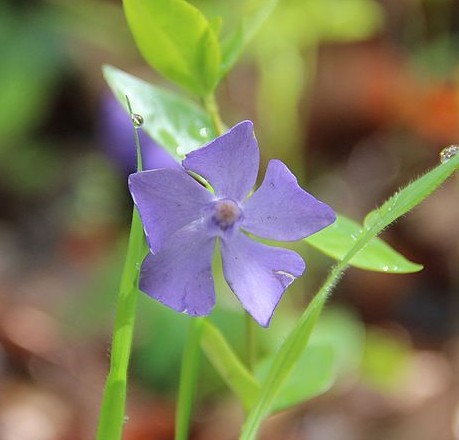
In conclusion, most of the energies I attribute to the Janthina, including the shadow meanings and conditions it may assist in healing, should be more or less self-explanatory. And while “feelings of separation from Source or of divine abandonment” may also be especially obvious, let me expound on this notion.
Much of the following explanation of this notion is very personal for me, to be fair, and is somewhat my own unique extrapolation though I don’t believe it to be too excessive or off the mark.
The Janthina, as has become thoroughly illustrated by now, depends entirely upon its bubble raft to survive in a vast ocean in which it cannot swim. Do you ever feel like this? Like you live in a world in which you barely know how to get by as the unique spirit that you are?
As I asked earlier on, what is your personal raft? Your spirituality? A relationship? Your career? Sometimes, no matter what we do or consider the center of our world, we can find ourselves becoming tempest-tossed and sinking into the depths of despair, losing what we so loved.
When something we have been clinging to with all our strength and determination turns out to not be what we thought – or even to be our very undoing – it is so easy to feel like we’ve been abandoned or betrayed by whatever higher power we believe in.
Itis easy to believe in, to trust, or to love something or someone when everything is going your way. Our convictions are put to the test when we lose what we held nearest and dearest.
Janthina teaches us that sometimes we have to let go. Letting go of what does not serve you does not have to result in the very literal end that Janthina experiences when she loses her raft, though it can feel just like that’s what is happening.
From this little shell that lives in constant danger, we also learn that we must continue to trust and to remain true to ourselves no matter what we lose. Whatever is at the center of your spiritual beliefs – Goddess, God, multiple deities, Nature, Buddha, elemental beings, ancestors, etc – it is still always there for you and you are never truly cut off or abandoned unless you cut yourself off.
Find the thing in your life that, no matter what you have to lose or let go of, you will never really lose. Something that you carry in your heart, mind and soul, and that reminds you of your own worth and divinity, and you will never be lost to an abyss of hopelessness.
To quote another wise, magical teacher, Gandalf the Grey…
“Despair is only for those who see the end beyond all doubt.”
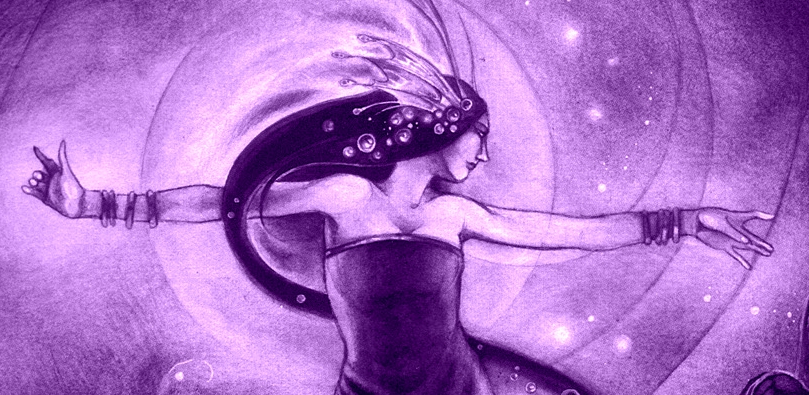
© 2018-2021 Meredith Everwhite – All Rights Reserved
Featured Image: Janthina on bubble raft, courtesy David Fenwick – Aphotomarine Photography
Tarot images © Stephanie Law
Resources:
Ocean Oracle by Michelle Hanson
https://comenius-legends.blogspot.com/2010/07/legend-of-violet.html
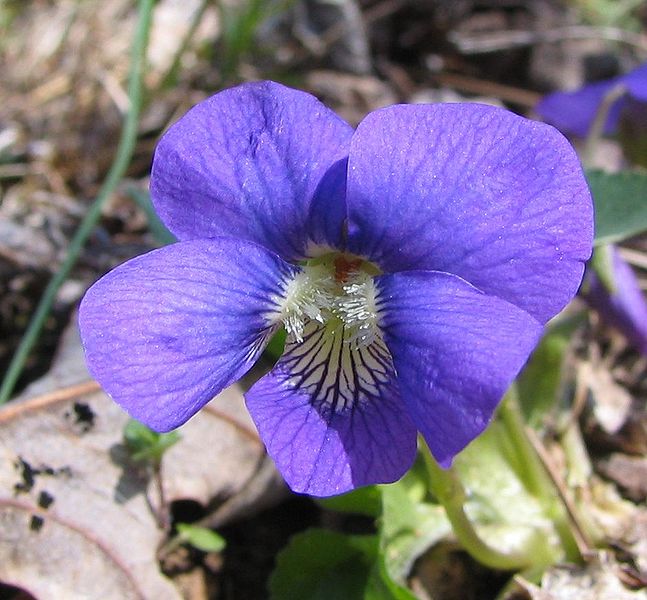
One Comment Add yours